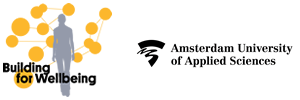Publications
Programming for the Subliminal Brain: Biometric Tools Reveal Architecture’s Biological Impact
In Programming for Health and Wellbeing in Architecture
Programming for Health and Wellbeing in Architecture presents a new approach to architectural programming that includes sustainability, neuroscience and human factors. This volume of contributions from noted architects and academics makes the case for rethinking the practices of programming and planning to incorporate evidence-based design, systems thinking, and a deeper understanding of our evolutionary nature.
These 18 original essays highlight how human and environmental health are closely related and should be incorporated as mutually reinforcing goals in every design project. Together, these chapters describe the framework for a new paradigm of building performance and design of the human experience.
Available for pre-order here.
Item will ship after November 1, 2021
Knowledge Quest: Submit Your Proposal for a Great High Density Environment
ArchDaily (2021)
Do you know a great example of high density living environments built within the last 30 years? Share your knowledge and contribute to the creation of an open repository via Crowd Creation. To be truly exemplary, the area should include a mixture of functions (at least some of them high-rise) where the physical fabric retains a human scale at street level despite the high density.
You may wonder who’s asking for and compiling this information: the Chair of Spatial Urban Transformation at the Amsterdam University of Applied Sciences is committed to building an open-access repository. Sharing best practices across the globe is becoming increasingly vital, especially as many of our western cities are on the eve of unprecedented densification. As a humble thank you for helping to guide this societal challenge, they’ve allotted 12 rewards for contributors. Click here to submit a project.


Exploring Eye-Tracking Technology: Assessing How the Design of Densified Built Environments Can Promote Inhabitants’ Well-Being
In Urban Experience and Design
Contemporary Perspectives on Improving the Public Realm (2020),
Eds Justin B. Hollander and Ann Sussman
Embracing a biological and evolutionary perspective to explain the human experience of place, Urban Experience and Design explores how cognitive science and biometric tools provide an evidence-based foundation for architecture and planning. Aiming to promote the creation of a healthier and happier public realm, this book describes how unconscious responses to stimuli, outside our conscious awareness, direct our experience of the built environment and govern human behavior in our surroundings.
This collection contains 15 chapters, including contributions from researchers in the US, the UK, the Netherlands, France and Iran. Addressing topics such as the impact of eye-tracking analysis and seeing beauty and empathy within buildings, Urban Experience and Design encourages us to reframe our understanding of design, including the narrative of how modern architecture and planning came to be in the first place.
This volume invites students, academics and scholars to see how cognitive science and biometric findings give us remarkable 21st-century metrics for evaluating and improving designs, even before they are built.
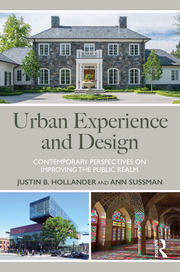

Using Neuro-Architecture to Reinforce Participatory Planning and Design
Conscious Cities Festival 2020, Centre for Conscious Design (2020)
The continuing process of densification of cities poses challenges for planning professionals and spatial designers to both build dwellings in high density and retain environments with a human scale as desired by the community. The reception of previous urban high-density developments teaches us that scientific foundations and user-based reflections on the proposed designs are needed ex-ante to ensure liveable environments.
By combining two research projects – one of which focuses on the urban renewal processes in 32 deprived neighborhoods in Amsterdam, and the other on utilizing neuroarchitecture to design livable streetscapes with urban area development – we propose an innovative means to reinforce participatory planning and design. We explore how the application of neuroarchitecture and in particular, eye-tracking technology evaluates scientifically proven and user-tested design solutions possible before they are implemented.
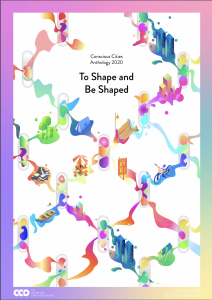

Eye-Tracking Street Users’ Visual Exploration of Buildings Across the Western World
Academy of Neuroscience Applied to Architecture (2020)
People in western countries spend approximately 90% of their time indoors. This severely affects their health (WHO 2013; Klepeis et al. 2001). The health risks are exacerbated if people travel between indoor spaces by car or public transport. Buildings on streets specifically
designed to create a human scale and connected with the street-space can potentially invite people to walk and enhance their engagement with their surroundings (O’Mara 2019; Ewing et al. 2013). Since the 1960s, influential empirical studies have raised awareness of the walkability of streets (e.g. Jacobs 2008) but reliable evidence on the effectiveness of applied design solutions remains scarce (Spanjar & Suurenbroek 2020).
This eye-tracking study focused on the visual ‘scanning’ of streetscapes and people’s appreciation of applied design principles. The aim was to gather together lessons learned from a variety of streetscapes in cities around the Western world (see fig. 1) and use them to inform the design of new developments in the Netherlands. Google Street View was used to select 19 images of streets in high-density environments with human-scale attributes in their façades and street-spaces (see fig. 2). They were presented in a randomized order in a laboratory setting to 40 participants, who viewed them for 5 seconds (see fig. 3). The participants’ visual explorative behaviour was recorded with advanced eye-tracking technology. A survey recorded their overall appreciation of the scenes and mouse-tracking collated their specific areas of interest.

Eye-Tracking the City: Matching the Design of Streetscapes in High-Rise Environments with Users’ Visual Experiences
Journal of Digital Landscape Architecture & GSD Harvard (2020)
Large cities in the West respond to an ever-increasing shortage of affordable housing by accelerating the process of urban densification. Amsterdam, for instance, aims to increase its housing stock by 10 percent in the next 15 years as its population is expected to grow by 20 percent. As in other cities, it seems inevitable that high-rise buildings with higher skyscrapers than in the past will be built within the existing urban fabric. Such large-scale (re)development projects shape the conditions for inhabitants’ eye-level experiences, perception of place and overall well-being. The new hybrid field of neuroarchitecture offers promising eye-tracking technology and theories for measuring inhabitants’ visualexperiences of the city and rethinking the effectiveness of applied design principles across the globe. In this paper, the ‘classic’ design solutions for creating streetscapes on a human scale in densified areas have been assessed by eye-tracking 31 participants in a laboratory setting, all of whom viewed photographs of 15 existing streetscapes in high-rise environments. The study drew on theories from the fieldof neuroarchitecture and used input from a panel of (landscape) architects and urban designers to design the research and analyze the eye-tracked patterns. The results indicate that the classic design principles (horizontal–vertical rhythms and variety; active ground floor; tactile materials) play a significant role in people’s appreciation of the streetscape and that their attention is unconsciously captured by the presence of these principles. The absence of the design principles seems to result in a scattered ‘searching’ eye-movement pattern. This also suggests that a coherent design of streetscapes in high-rise environments may contribute to a human scale at eye-level.
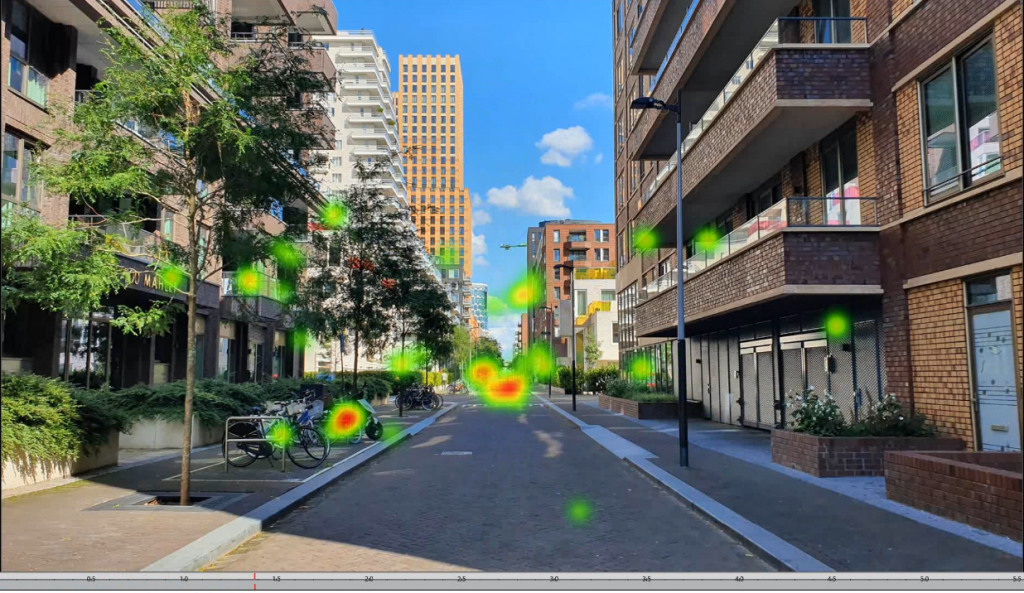

Sensing Streetscapes: 2-year research on the physical-behavioral interrelationship aimed at informing the design of human-scaled densification in Amsterdam.
A<—>N #19 Blog, The Academy of Neuroscience for Architecture (2019)
Our research proposal was granted by the Dutch national research fund SIA in the first half of 2019 and we are roughly eight months on the way. Based on our first research, we can preview some first findings, although we think they might be defined mostly as challenges as well. Participants eye fixated on people, traffic and signs. Zones where interior and exterior comes together in the active plinth of buildings and terraces in front, draws instantly the attention (see fig. 4 left photo). Searching for social activity is also what can be observed with eye tracked patterns of other viewed streetscapes. In particular when a building at the end of street blocks the view, the eye is driven towards the modern facade going from one oriel window to another and also colourful balconies is part of the eye pattern.
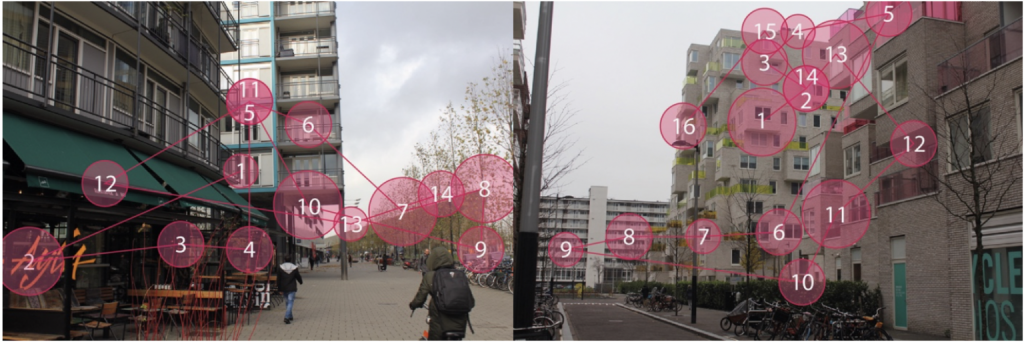

Exploring the Application of (Eye)tracking Technology: Assessing urban design principles for streetscapes in high-density built environments.
International Conference on Urban Experience and Design (2019)
The accelerated densification of Western European cities driven by economic growth has major spatial implications for the liveability of the city. Amsterdam, for example, is challenged to accommodate 50,000 to 90,000 new homes in the next five to ten years. That is equivalent to 10% of the city’s current total housing stock. Moreover, the new homes have to be built within the existing urban fabric, calling for high densities and the construction of new ‘un-Dutch’ typologies of extreme high-rise housing. However, the impact on the (visual) experience of the built environment in streetscapes at eye-level remains unpredictable. This calls for a deeper understanding of the relationship between current dominant design solutions and the conditions they ought to provide for the users of streetscapes.
In the field of Urban Design, many scholars have proposed theories regarding the composition of streetscapes and their physical and programmatic affordances for shaping the conditions of the social fabric (e.g. Alexander et.al. 1977; Jacobs 1961; Jacobs 1993; Banerjee and Southworth 1990; Sennett 2018). The observed interplay between the physical and social fabrics are captured in theoretical, rhetorically powerful narratives. In turn, they are used as common design principles such as active ground floors, tactile surfaces and mixed uses. The question arises as to whether these concepts work as intended, and more pressing, how streetscapes can be created in the planned high-rise neighbourhoods that retain a human scale for their users.
The emergence of a new generation of technology and methods borrowed from the field of neuroscience open up the possibility of gaining a profound understanding of those physicalsocial interrelationships in these streetscapes and broadening the evidence base of design principles. Our pilot study explores the potential of the new field of neuro-architecture, focussing on deprived neighbourhoods where urban renewal takes place. To develop our methodology, we draw on a combination of neuroscience for architecture studies (Berto & Pasini 2008; Valtnachov and Ellard 2015; Foulsham et al. 2011; Hollander et al. 2018; Andreani and Savegh 2017), urban design theories and sociological observation techniques. We use (eye) tracking technology to investigate the chain of users’ (visual) experience, behaviour and perception of streetscapes to relate applied design principles to the conscious and unconscious reception by the users of the streetscapes. Applying biometric technologies in triangulation with social science methodologies, our project seeks to establish indications of evidence-based design guidelines for streetscapes in areas of high-rise development.

Verbinden van fysiek en sociaal: biometrisch actieonderzoek naar leefbare straten
Ruimte + Wonen (2019)
Hoe schept de fysieke ruimte de juiste condities voor haar gebruikers? Dit is een terugkerende uitdaging bij iedere gebiedsontwikkeling en herontwikkeling. In de huidige tijd is het temeer urgent vanwege de vergaande verdichting van onze steden, de stedelijke vernieuwing en de introductie van nieuwe ‘on-Nederlandse’ woonmilieus. Zo verdubbelt het aantal woontorens van boven de honderd meter de komende zes jaar. Hoe zorgen we dat die nieuwe fysieke ruimtes een leefbare woonomgeving creëren? Deze vraag is specifiek relevant voor het schaalniveau van de straat. Dat is onze gedeelde publieke ruimte en maken we dagelijks ‘de sociale stad’. Nieuwe biometrische technologie biedt de kans om de relatie tussen fysiek en sociaal beter in beeld te krijgen.
Voor de traditionele woonmilieus is min of meer bekend welke fysieke ontwerpoplossingen een positief effect op de beleving en het gebruik van de straatruimte hebben. Te denken valt aan een actieve plint, ritme in de straatwanden en het gebruik van tactiele materialen. Voor de nieuwe hoogstedelijke woonmilieus is het echter de vraag of deze oplossingen ook werken. En meer specifiek of ze op straatniveau een menselijke maat voor de voetgangers creëren. Natuurlijk bieden voorbeeldstellende hoogstedelijke woongebieden in het buitenland zicht op het soort ontwerpprincipes die daar zijn toegepast. Referentieprojecten zijn voor de Nederlandse praktijk echter maar beperkt van waarde. De verstedelijking en de context van bijvoorbeeld Vancouver en Toronto zijn wezenlijk anders.
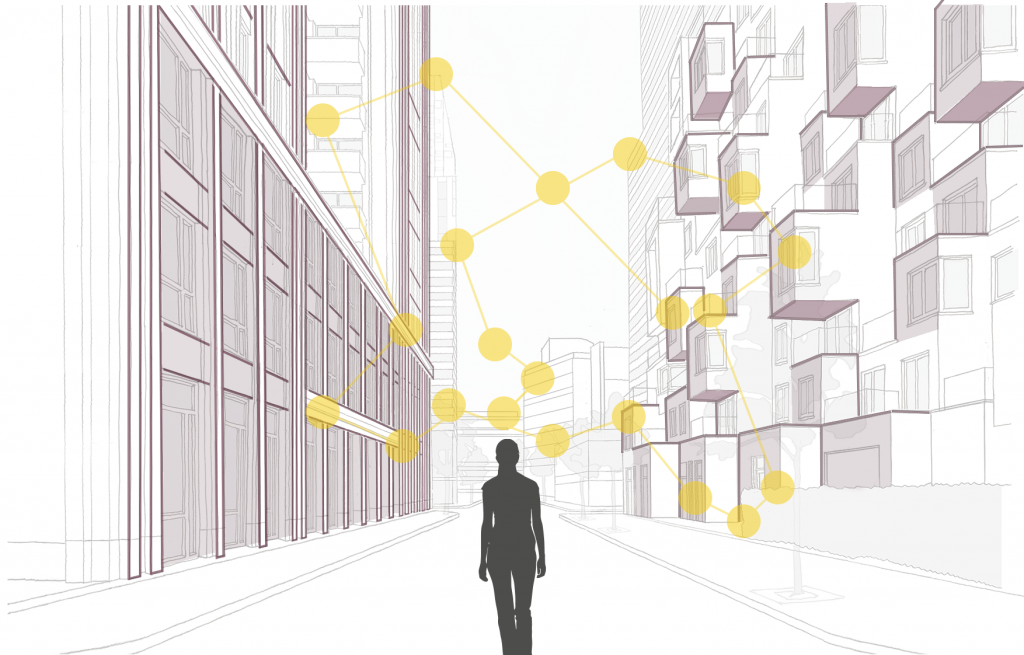

(Eye)Tracking Users’ Patterns: Visual Experience and Choice Behavior in Transition Zones of Amsterdam-Southeast.
Academy of Neuroscience Applied to Architecture (2018)
Over the next 10 years, the City of Amsterdam plans to develop major housing schemes provide 90,000 new homes within the existing urban fabric.At the same time, an urban renewal program is being launched to revitalize the most deprived neighbourhoods.Together, these challenges call for more evidence based design-principles to secure liveable places.Recent development in neuroscience, provides innovative tools to examine in a measurable, cause-effect way, the relationships between the physical fabric, users’ (visual) experience and their behavior in public spaces.In neuroscience, eye-tracking technology (ET) complements brain and behavioral measures (for overview see Eckstein et al.2017).ET is already used to evaluate the spatial orienting of attention, behavioral response and emotional and cognitive impact in neuroscience, psychology and market research (Popa et al. 2015).ET may also radically change the way we (re)design and thus, experience cities (Sita et al. 2016; Andreani 2017). Until now, eye-tracking pilot studies collected eye fixation patterns of architecture using images in a lab-setting (Lebrun 2016).
In our research project Sensing Streetscapes, we take eye-tracking outdoors and explore the potential ET may offer for city design.In collaboration with the municipality of Amsterdam and the local community, the H-neighborhood is used as a single case study.The main focus for urban renewal lies in the “transition-spaces”.They connect the neighborhood with the rapidly developing adjacent areas and are vital for improving the weak social-economic status.The commonly used design principles are validated (Alexander et al.1977; Gehl 2011, 2014; Pallasmaa 2012) and the consistency of ET is tested, alongside (walk along) interviews and behavioral observations.In the next phase, the data will be analyzed by a panel of applied psychologists and urban designers.
The initial results provide valuable lessons for the use of eye-tracking in urban design research.For example, a visual pattern analysis offers more accurate images of the spatial key-elements that matter when moving through transition spaces.More sensory-based city design research is needed to gather a full understanding of the relationships between the configuration of space, users’ (visual) experience, behavioral responses and in turn, perceptual decision making.
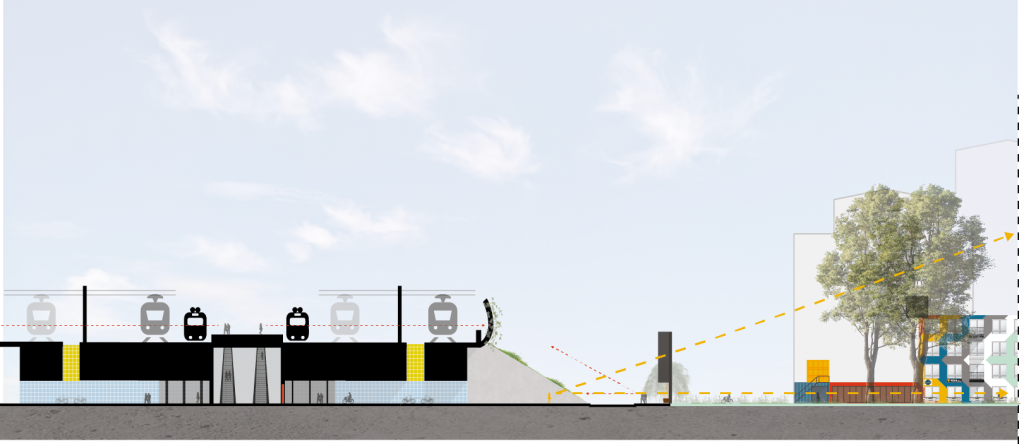

Reference list
Sensing Streetscapes (2021) Knowledge Quest: Submit Your Proposal for a Great High Density Environment. Archdaily.
Suurenbroek, F. en Spanjar, G. (2020) Intertwining Neuro-Architecture and Participatory Planning: New pathways for designing inclusive and livable neighborhoods. The Centre for Conscious Design (CCD). doi:
Suurenbroek, F. en Spanjar, G. (2020) Exploring Eye-Tracking Technology: Assessing how the design of densified built environments can promote inhabitants’ well-being, in Hollander, J. and Sussman, A (eds.) In Urban Experience and Design: Contemporary perspectives on improving the public realm (pp. 91-103). Boston: Routledge. doi: 10.4324/9780367435585
Suurenbroek, F. en Spanjar, G. (2020) Eye-tracking Street Users’ Visual Exploration of Buildings Across the Western world. The Academy of Neuroscience for Architecture (ANFA).
Spanjar, G. & Suurenbroek, F. (2020). Eye-Tracking the City: Matching the design of streetscapes in high-rise environments with users’ visual experiences. In: Journal of Digital Landscape Architecture, 5-2020, pp. 374-385. © Wichmann Verlag, VDE VERLAG GMBH · Berlin · Offenbach. ISBN 978-3-87907-690-1, ISSN 2367-4253.
Suurenbroek, F. & Spanjar, G. (2020). Sensing Streetscapes: 2-year research on the physical-behavioral interrelationship aimed at informing the design of human-scaled densification in Amsterdam. Web publication/site, The Academy of Neuroscience for Architecture.
Suurenbroek, F., & Spanjar, G. (2019). Exploring the Application of (Eye)tracking Technology: Assessing urban design principles for streetscapes in high-density built environments. Abstract from 1st International Conference on Urban Experience and Design, Medford and Somerville, United States.
Suurenbroek, F. & Spanjar, G. (2019). Verbinden van Fysiek en Sociaal: Biometrisch actieonderzoek naar leefbare straten., ‘s-Hertogenbosch: Ruimte + Wonen. Opgehaald van https://www.ruimteenwonen.nl/verbinden-van-fysiek-en-sociaal-biometrisch-actieonderzoek-naar-leefbarestraten
Suurenbroek, F., & Spanjar, G. (2018). (eye)tracking users’ patterns: Visual experience and choice behavior in transition zones of Amsterdam-Southeast. In Shared behavioral outcomes (pp. 176-177). The Academy of Neuroscience for Architecture.
